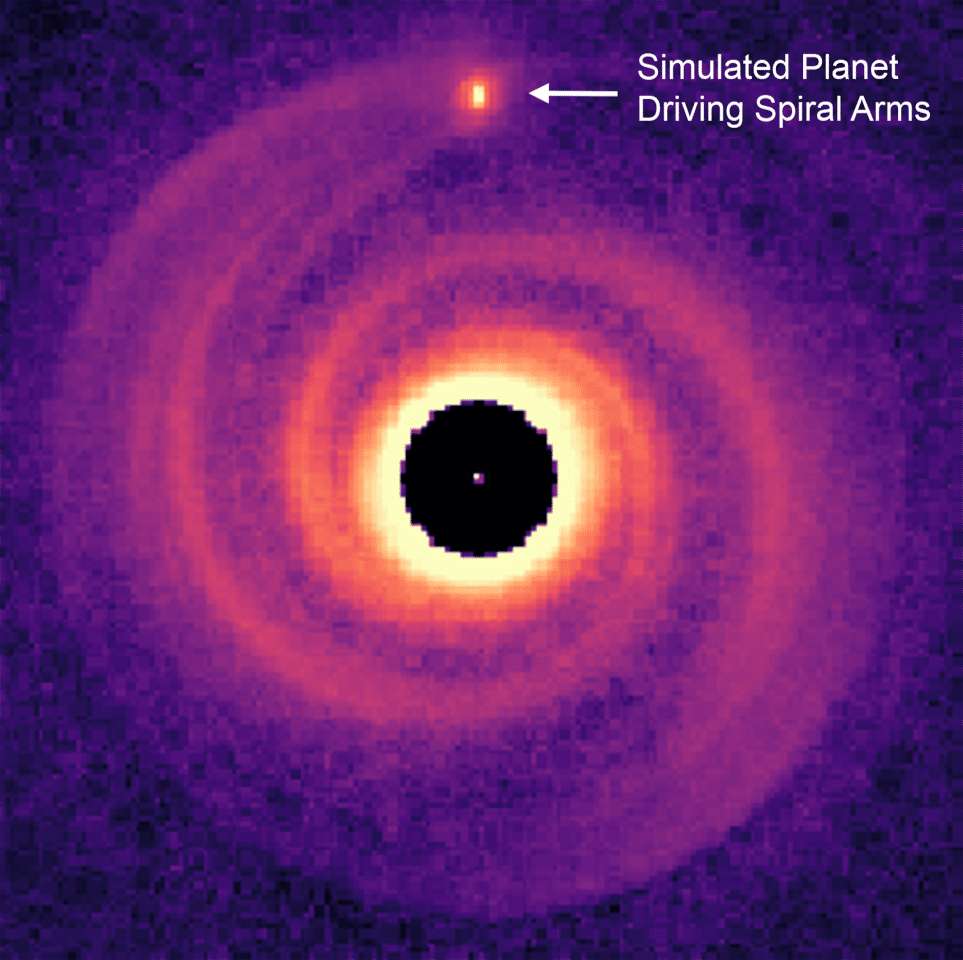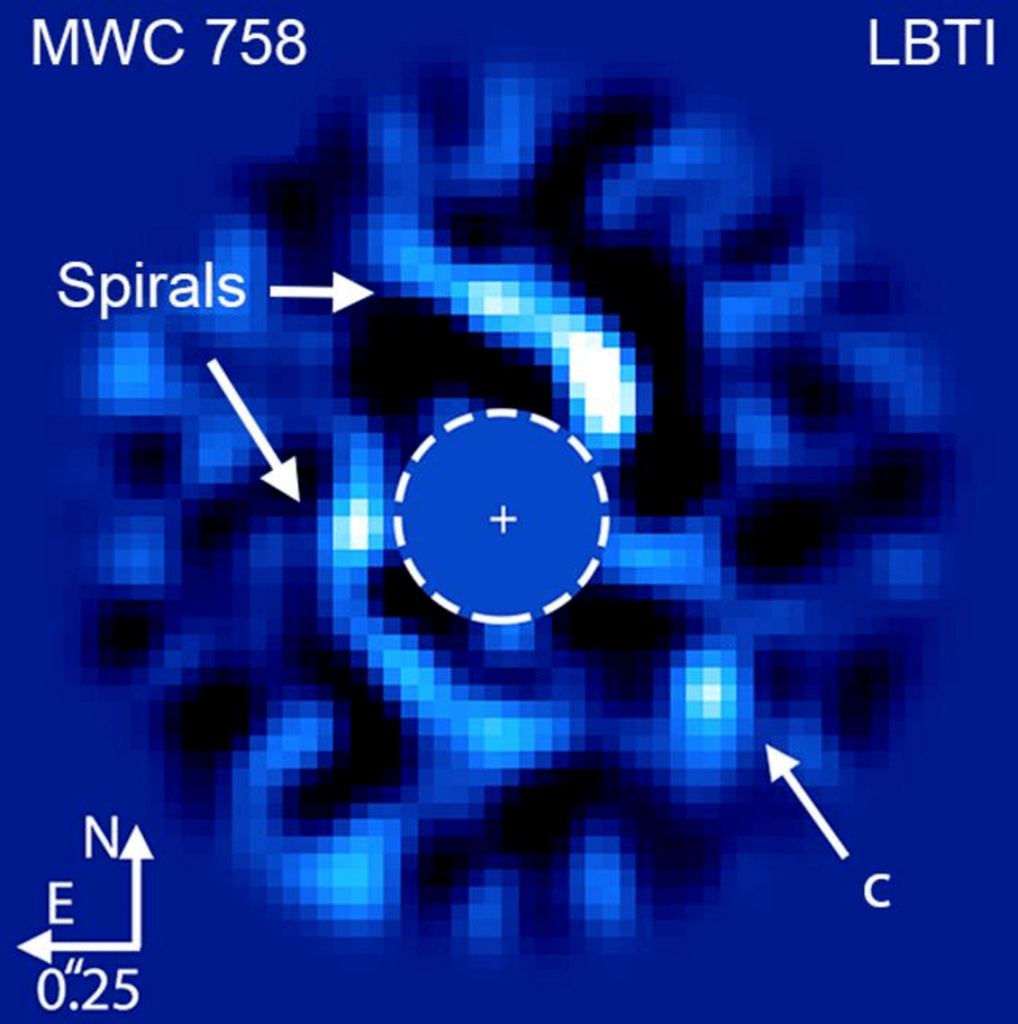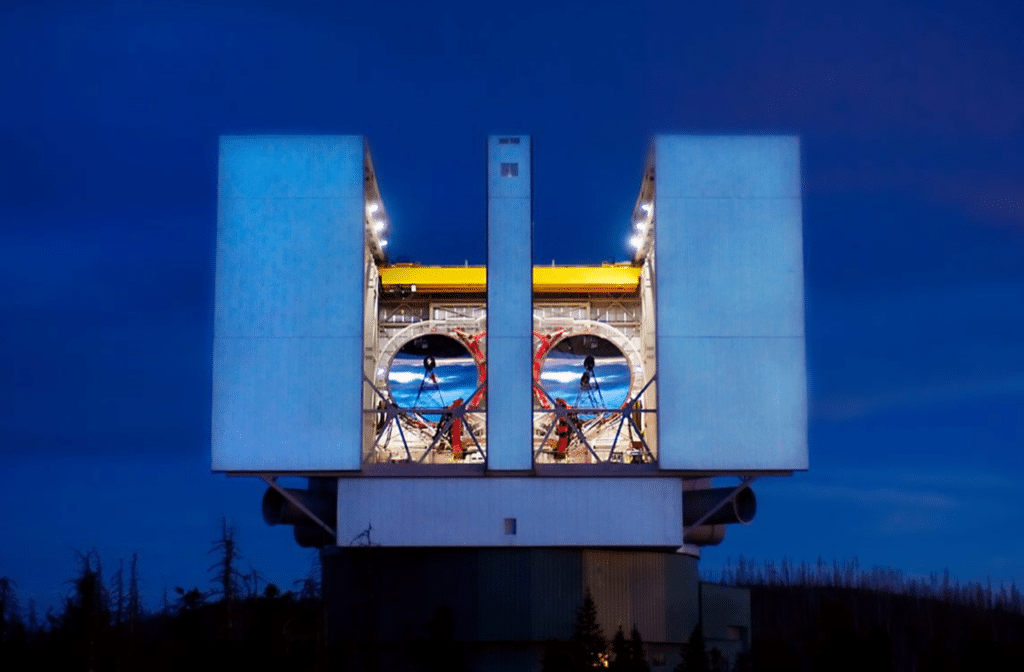It’s the age-old question, “How do planets form?” Now, scientists are a little closer to the answer. Researchers made a groundbreaking discovery in understanding planet formation with the detection of a giant exoplanet that generates spiral arms within its infant planetary system.
The newly detected exoplanet, named MWC 758c, orbits a star located 500 light-years away from Earth. The system, still in its early stages, possesses a protoplanetary disk similar to what our solar system may have looked like during its infancy. The spiral pattern observed in this system’s debris offers a glimpse into the formation and gravitational sculpting of planets, such as Jupiter, which may have influenced the development of Earth.
“Our study puts forward a solid piece of evidence that these spiral arms are caused by giant planets,” says Kevin Wagner, lead author, and postdoctoral researcher at the UArizona Steward Observatory, in a media release. “I think of this system as an analogy for how our solar system would have appeared less than 1% into its lifetime.”
Spiral arms within protoplanetary disks are generated by the gravitational pull of a massive companion, such as a giant planet. However, previous attempts to detect these planets had been unsuccessful. The researchers used the Large Binocular Telescope Interferometer (LBTI) to finally detect MWC 758c by observing longer wavelengths in the mid-infrared range.

“Either this is a planet with a colder temperature than expected, or it is a planet that’s still hot from its formation, and it happens to be enshrouded by dust,” explains Steve Ertel, study co-author, and LBTI lead instrument scientist.
The discovery of MWC 758c opens up new possibilities for studying similar systems and hidden planets. Future observations using the James Webb Space Telescope (JWST) will shed further light on the nature of the exoplanet and help refine planet formation models.
“Depending on the results that come from the JWST observations, we can begin to apply this newfound knowledge to other stellar systems and will give us an idea as to what properties we should be looking for in order to detect them.” according to Wagner.

The study is published in the journal Nature Astronomy.












